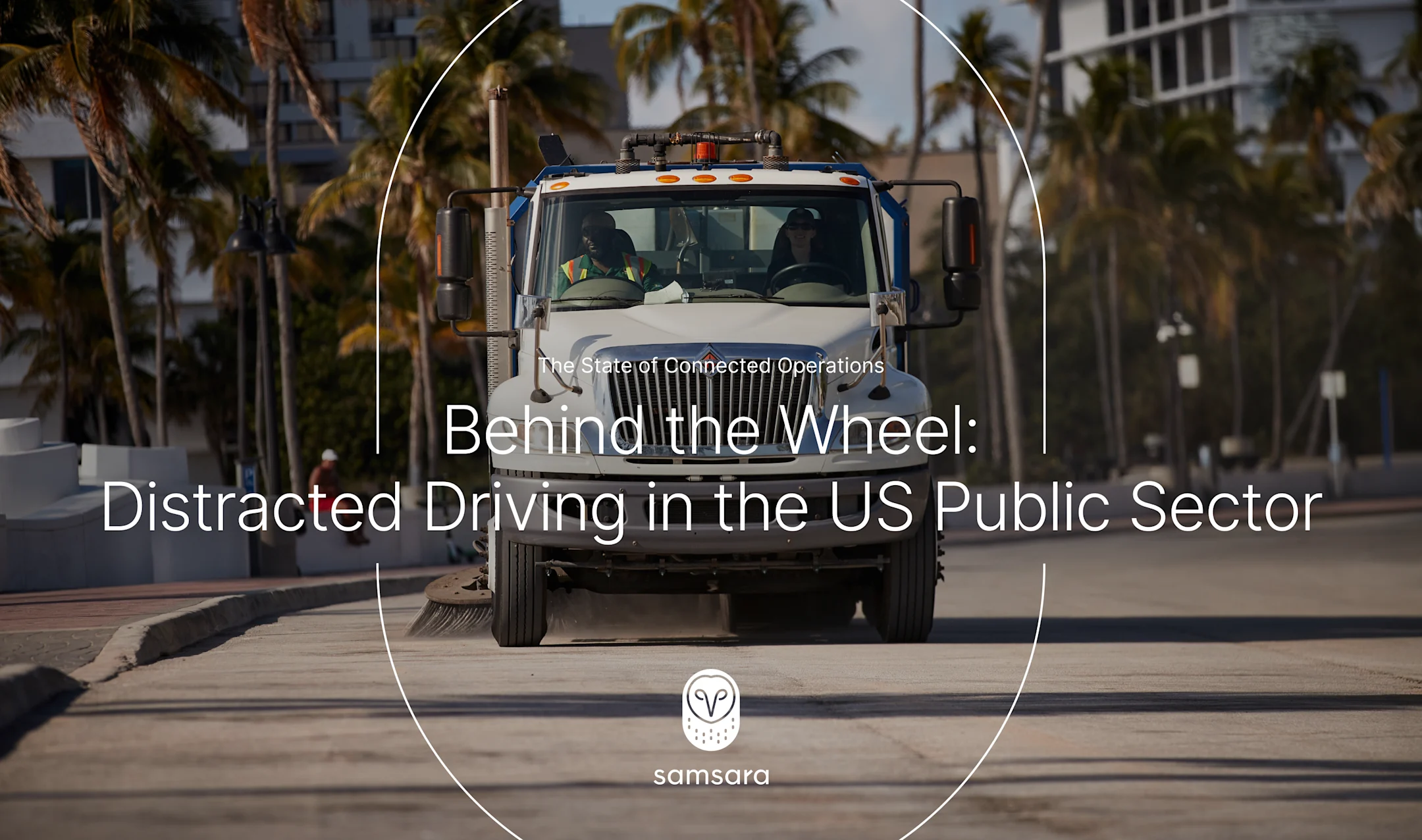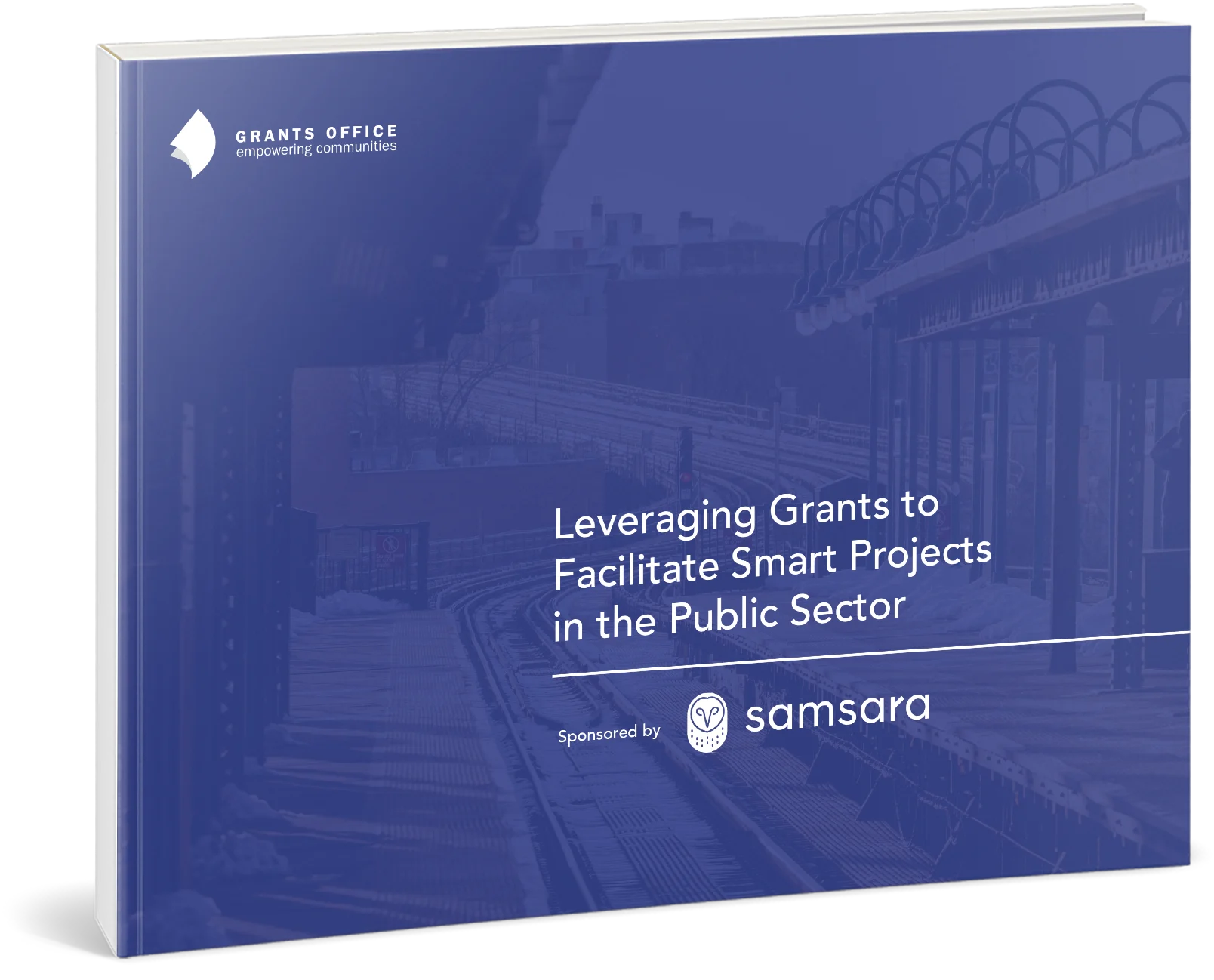US Public Sector: State of Connected Operations Report
Distracted Driving in the US Public Sector – Report

Distracted driving is a critical challenge affecting US public sector fleets and drivers, impacting operational safety, fiscal responsibility, and public trust. In 2023 alone, the National Highway Traffic Safety Administration (NHTSA) reported 3,275 individuals were killed and an estimated 324,819 were injured in motor vehicle crashes involving distracted drivers—all preventable tragedies. This risk is particularly acute for those operating public sector vehicles; whether it’s law enforcement cruisers, transit and school buses, or heavy service equipment, a single moment of inattention can lead to devastating consequences, including serious injuries, fatalities, disrupted public services, and significant financial liabilities.
Our new report, Behind the Wheel: Distracted Driving in the US Public Sector, uncovers firsthand insights from drivers themselves. It provides practical solutions and actionable strategies to help public sector organizations reduce risk, enhance driver safety, and foster a culture of safer driving that protects the public and strengthens community trust.
A preview of what’s inside
Safer roads for all: Distracted driving insights for government leaders
Public sector leaders face the dual challenge of ensuring operational efficiency and protecting their teams and the public. This report offers a unique, in-depth look at distracted driving through the eyes of frontline drivers, providing actionable insights to help you proactively build safer practices for your workforce and the communities you serve.
What’s inside:
• Insights from a survey of public sector drivers on the challenges of distracted driving and the solutions they say will make a difference.
• The top technology and policy changes drivers identify as critical for improving road safety and protecting lives.
• Forward-looking recommendations on the role of technology, training programs, and policy changes that employees say will enhance driver well-being and strengthen public safety within government agencies.
What you’ll learn:
Distracted driving is an ongoing public safety challenge that requires intervention
The report found that 76% of public sector drivers experienced a "close call" or near-miss due to distraction from their personal mobile devices within the last year. Primary distractions identified include personal phone use for social media and messaging, as well as smoking.
Proactive safety measures enhance driver retention and public trust
86% of public sector drivers are more likely to stay with organizations that implement proactive measures to prevent distracted driving. This highlights a strategic advantage for agencies committed to driver safety, fostering loyalty and contributing to a stable, experienced workforce critical for public service.
Empowering drivers with the right tools improves road safety
Drivers say the top three ways agencies can help reduce work-related mobile use on the road are better in-cab routing and navigation (50%), implementing policies that prioritize safety over speed (49%), and improving communication systems to limit work-related calls/messages (43%).
Technology, training, and policy are shaping the future of distracted driving prevention
The top technologies drivers want to tackle distracted driving are improved hands-free communication systems and accurate, AI-powered detections and alerts. Government policies can also serve as a powerful catalyst, with drivers identifying public awareness campaigns, technology adoption incentives, and funding for driver education as top initiatives. This indicates a clear path forward through integrated strategies that combine innovative technology with comprehensive education and clear guidelines.
Ready to make roads safer, reduce risk and strengthen public trust? Get your copy today.
Understanding the realities of distracted driving is the first step toward effective prevention. Access the full report for essential insights and actionable strategies, informed by direct driver experience, to protect your workforce, enhance community safety, and build lasting public trust.









